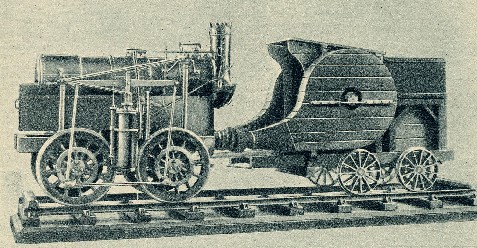
The first railways appeared in England and in France in the 1830s. The steam engines which were used for the first time for the railway transport supplied little power and their boilers produced little steam.
Marc Seguin's locomotive

The French engineer, Marc Seguin (1786-1875), invented in 1825 a new architecture for the boiler : the tubular boiler. The iron tubes constituting the boiler are surrounded by water and the very hot gases from the fire go through them.
Marc Seguin's steam locomotive in front of the "Arc de Triomphe"
The "Train Capitale" rail show - Paris (May 2003)

© Jean-Jacques d'ANGELO - Tous droits de reproduction interdits
Marc Seguin's locomotive during the "Train Capitale" show in Paris

© tgveurofrance.com
Several steam locomotives along the Champs-Elysées Avenue in Paris

© Jean-Jacques d'ANGELO - Tous droits de reproduction interdits
George Stephenson from England also used this technique for the conception of his own locomotive in 1829 : "the Rocket". Thanks to "the Rocket", he won a competition organized in Rainhill in England in which six locomotives were opposed. "The Rocket" succeeded in dragging 13 tons with an average speed of 22 kph. Its weight : 4.3 tons in working order. It was used on the Liverpool - Manchester line.
Back to the "Train Capitale" show.